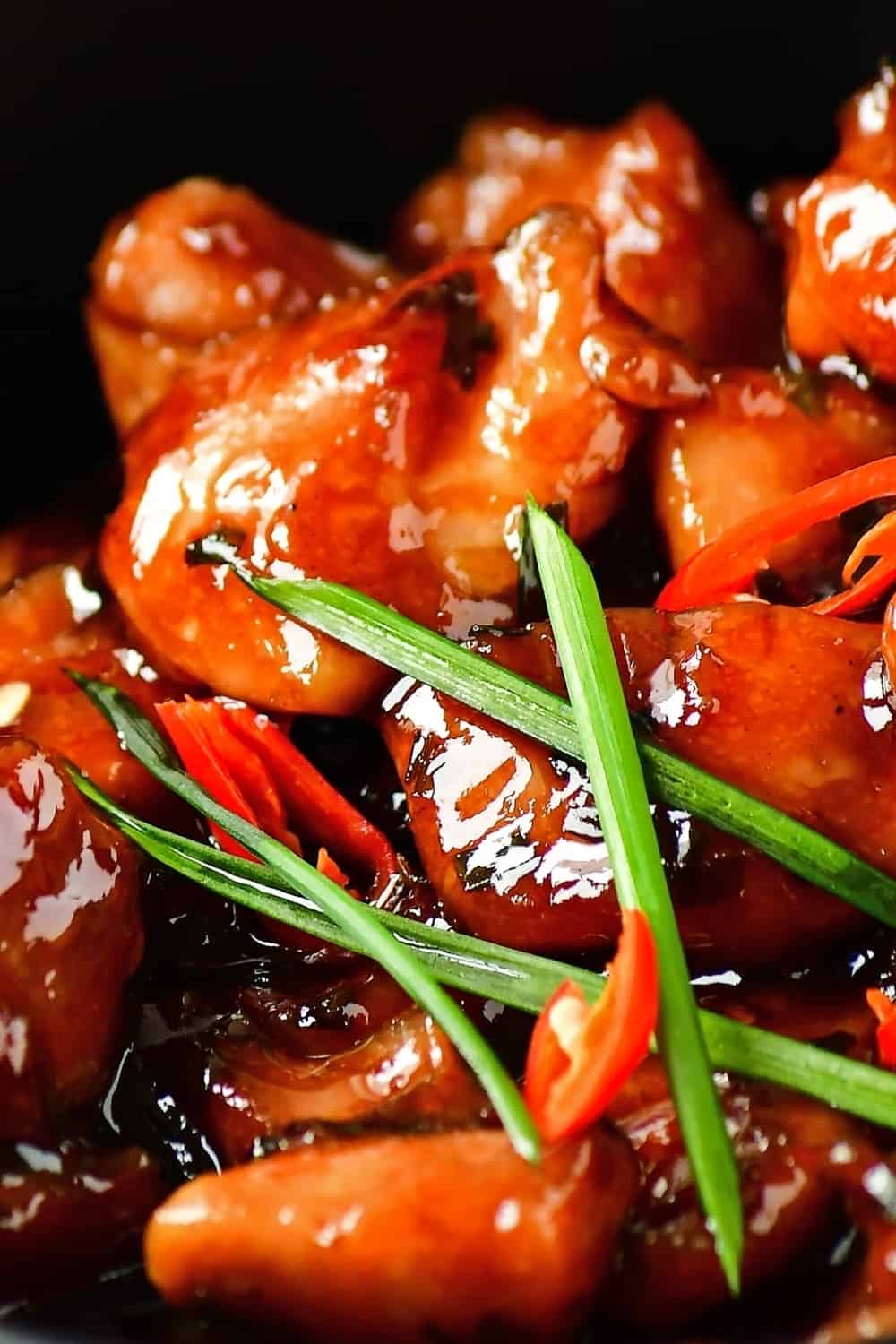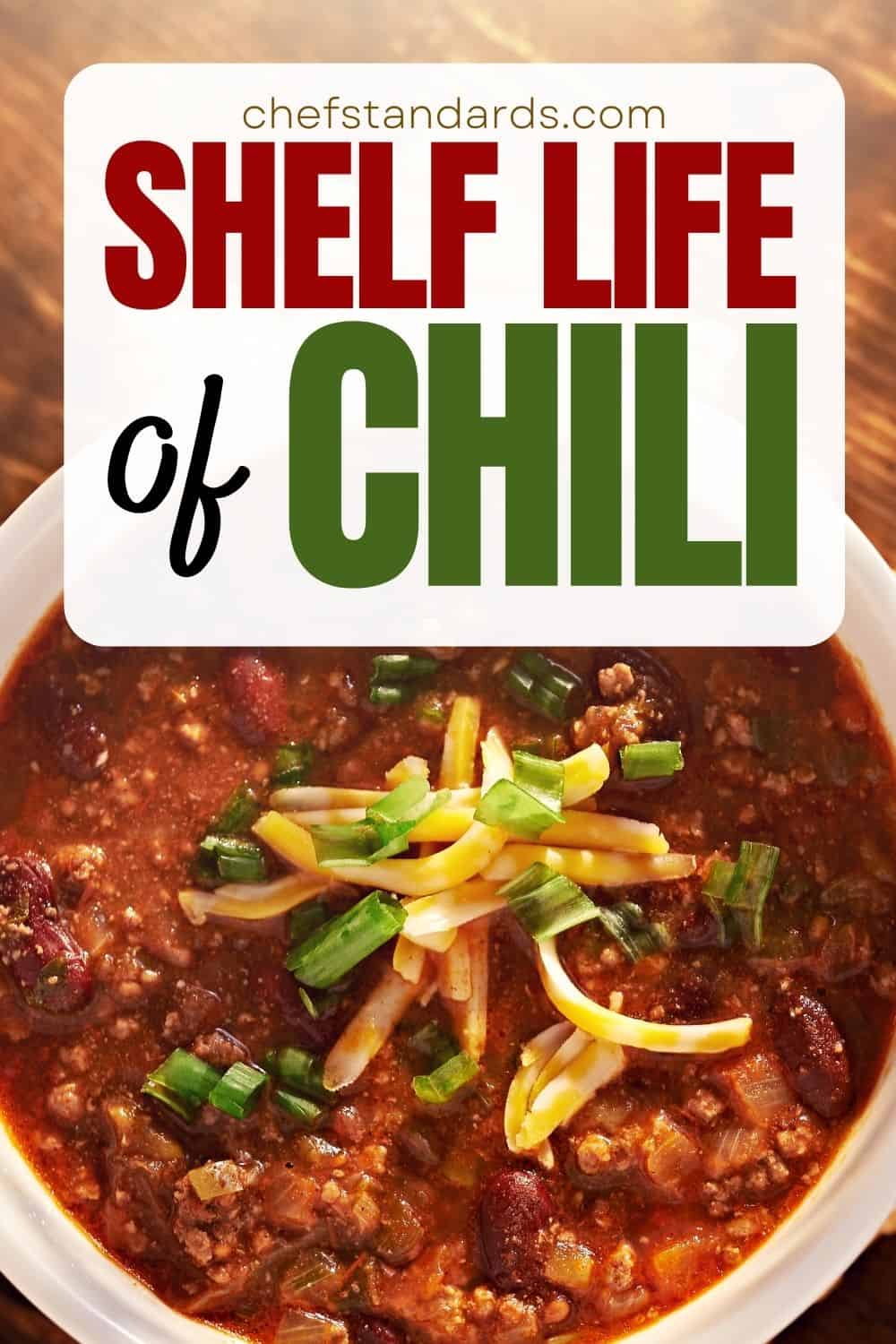Chili is one of those items that is very often used for many types of foods. There are chili peppers, chili powder, chili sauce, etc.
But there is also a popular spicy stew known as chili. Although the ingredients can vary, the main ones include meat (usually beef), beans, chili peppers, and various spices and seasonings.
I am a huge fan of spicy food and one that I love to enjoy on cold winter nights is definitely chili. Although it is delicious and spicy, it won’t stay like that forever.
It needs proper handling and storage to maintain its quality, so I usually refrigerate it if I have leftovers or if I made a large batch.
But how long does chili last in the fridge? It is usually good for up to 3-5 days, but there are different factors that influence its shelf life.
What Is The Shelf Life Of Chili In The Fridge?

As with many other foods and food items, there are various versions. In this case, you can make your own chili, but you can also enjoy store-bought chili. However, they have slightly different shelf lives.
Homemade Chili
Whether you use fresh chili peppers, chili flakes or, or red pepper flakes alongside various types of meat and other spices and seasonings, you can always make your own spicy masterpiece.
Once you make your own chili from your chosen ingredients, you definitely need to store it in the fridge.
This is because chili can not stay at room temperature for too long, i.e. for more than 2 hours, because of the higher risk of bacterial growth after that time frame.
Namely, room temperature falls in the category of the temperature danger zone (40°F-140°F) in which harmful bacteria thrive.
Once you put it in the fridge, homemade chili will stay good for up to 3-4 days. However, if you want to enjoy the best quality, I would recommend that you consume it within 2 days. Believe me, I am speaking from my own experience.
If you want to know how to make a delicious chili from an award-winning homemade recipe, check out this video.
Store-Bought Chili
Store-bought food items always tend to have a longer shelf life than homemade ones due to the presence of preservatives.
Because of that, chili bought from the grocery store can stay outside of the fridge for even a few months if unopened and stored in a cool, dry place. Of course, this is the case if the printed date is alright.
However, once you open it, you need to store it in the fridge and it will stay good for up to 4 days if properly refrigerated.
Chili Sans Meat
Now, here is the little twist. Most types of chili are made with some type of meat. In most cases, it is beef, but pork and chicken can also be used.
You see, beef isn’t only reserved for Beef Consomme and some other delicious meat dishes, but you can also make a tasty and spicy chili.
However, there are also vegetarian versions, known as chili sans meat. This type of chili tends to have a slightly longer shelf life. Chili without meat can be stored in the fridge for up to 4-6 days.
This is because meat (especially chicken) is a highly sensitive food in which bacteria can grow rapidly, even if it is properly stored at fridge temperature.
Factors That Influence The Shelf Life Of Refrigerated Chili

Now, besides the exact type of chili, there are a few more factors that influence its shelf life. So, let’s see what those factors are and how they influence the shelf life of chili.
• Ingredients used in chili: Aside from the fact that it is best to use fresh, high-quality ingredients, you have to know that those ingredients can be in different forms, which can be crucial in knowing shelf life.
Namely, fresh meat tends to spoil faster than dried or canned meat. Similarly, fresh chili peppers have a shorter lifespan compared to dried or powdered varieties.
• The way you cook chili: The way you cook and prepare chili can have a huge impact on its shelf life. If you cook it for an adequate amount of time, you shouldn’t be worried about it getting spoiled too quickly.
This means it needs to be brought to a boil in order for all of those potentially harmful bacteria to be destroyed. Higher temperatures are crucial in killing bacteria and other microorganisms that may cause spoilage.
• Time frame and the temperature outside the fridge: The time in which your chili stays outside the fridge is also important. If it has been at room temperature for 2 hours or more, there is a high chance that it won’t stay good for too long in the fridge, according to the USDA.
Also, if the temperature is really high (higher than 90°F), you should throw your chili out after 1 hour, so take that into consideration as well.
• Proper storage and handling: Finally, handling your chili with clean utensils and storing it in the fridge the right way is a huge part of protecting it from spoilage and maintaining its freshness and quality.
However, more about proper storage conditions in the next part.
How To Properly Store Chili In The Fridge?

Nothing without proper storage. Whether it is with or without meat, store-bought or homemade, you need to set the right storage conditions for your food if you don’t want to see it in the trash. So, here are the few simple steps you need to follow:
STEP 1: Once you make your chili, let it cool down to room temperature, but don’t let it stay outside the fridge for too long. Around 30 minutes to 1 hour is just enough time.
STEP 2: Once it is cooled, transfer your chili from the pot to an airtight storage container. Make sure to seal the container properly in order to avoid cross-contamination.
STEP 3: Label the container with the exact date and time of storage.
STEP 4: Put the container in the coldest part of the fridge, away from the fridge door because the temperature is more stable there. It is ideal to put it at the back near the bottom shelf.
The refrigeration process for store-bought chili is almost the same. The only difference is that you probably won’t have to let it cool to room temperature.
Also, instead of transferring it from the pot, you’ll need to transfer it from its original packaging bought from the grocery store.
A Few Additional Storage Tips
Besides the basic process of storing chili, there are also a few additional tips and tricks I want to share with you. Let’s take a look:
• Since chili needs constant refrigeration to stay safe, it is not a bad idea to portion it into smaller portions, so that you don’t have to open the same container multiple times.
• If you have some on hand, it is best to use small shallow containers. Since they have a larger surface area, the contents inside will cool down faster.
• Set the temperature of the fridge below 40°F as this will give your chili some additional time in the refrigerator.
• When making chili, avoid putting in too many acidic foods (like tomato), as they are more prone to bacterial growth.
• Reduce the water content, i.e. thicken the chili before putting it in the fridge as excessive moisture can cause mold growth and spoilage.
• Also, don’t put too much strong spicy food in your chili because refrigeration enhances the spice levels.
What Are The Main Signs Of Bad Chili?

Even when you know the shelf life of refrigerated chili and the best practices of storing it, a little carelessness can lead to spoilage. After all, we are all humans and this can happen to everyone.
Because of that, it is important to know what the spoilage signs are in order to avoid any unwanted consequences, including food poisoning or foodborne illness. So you need to consider the following signs:
• Unusual Appearance: If you see any discoloration of your chili, and especially if you notice spots with an unusual color, your chili is not good for consumption any more.
Those unusual spots are most likely moldy spots, and we all know that eating mold is not the most pleasant experience and can easily cause health hazards.
• Different Texture: The texture of the chili can also change in these situations, i.e. it can become slimy or moldy which is, again, a clear sign of spoilage.
• Unpleasant Odor: In most cases, if your chili goes bad, it will develop an off, foul, or sour smell. So if you notice a strong, unpleasant odor that is different from its usual aroma, know that it is a sign that bacteria or mold may have started to grow.
• Different Taste: If you do not notice any of these signs, but are still uncertain, you can give it a try by tasting just a little bit. If it has a bitter, rancid, or generally unpleasant taste, it is probably bad, and you shouldn’t continue consuming it.
Finally, even if there are none of these signs, if you left your chili in the fridge for more than the suggested time, it is safer to err on the side of caution and discard it.
Wrap Up
So how long does chili last in the fridge?
Although the exact shelf life of refrigerated chili can vary depending on a few factors, it will mostly retain its freshness and quality for up to 3-4 days.
Store-bought chili, if stored properly, can last a little bit longer than homemade ones, due to the presence of preservatives.
Also, those that don’t contain meat, can stay good in the fridge for up to 4-6 days, if refrigerated the right way.

